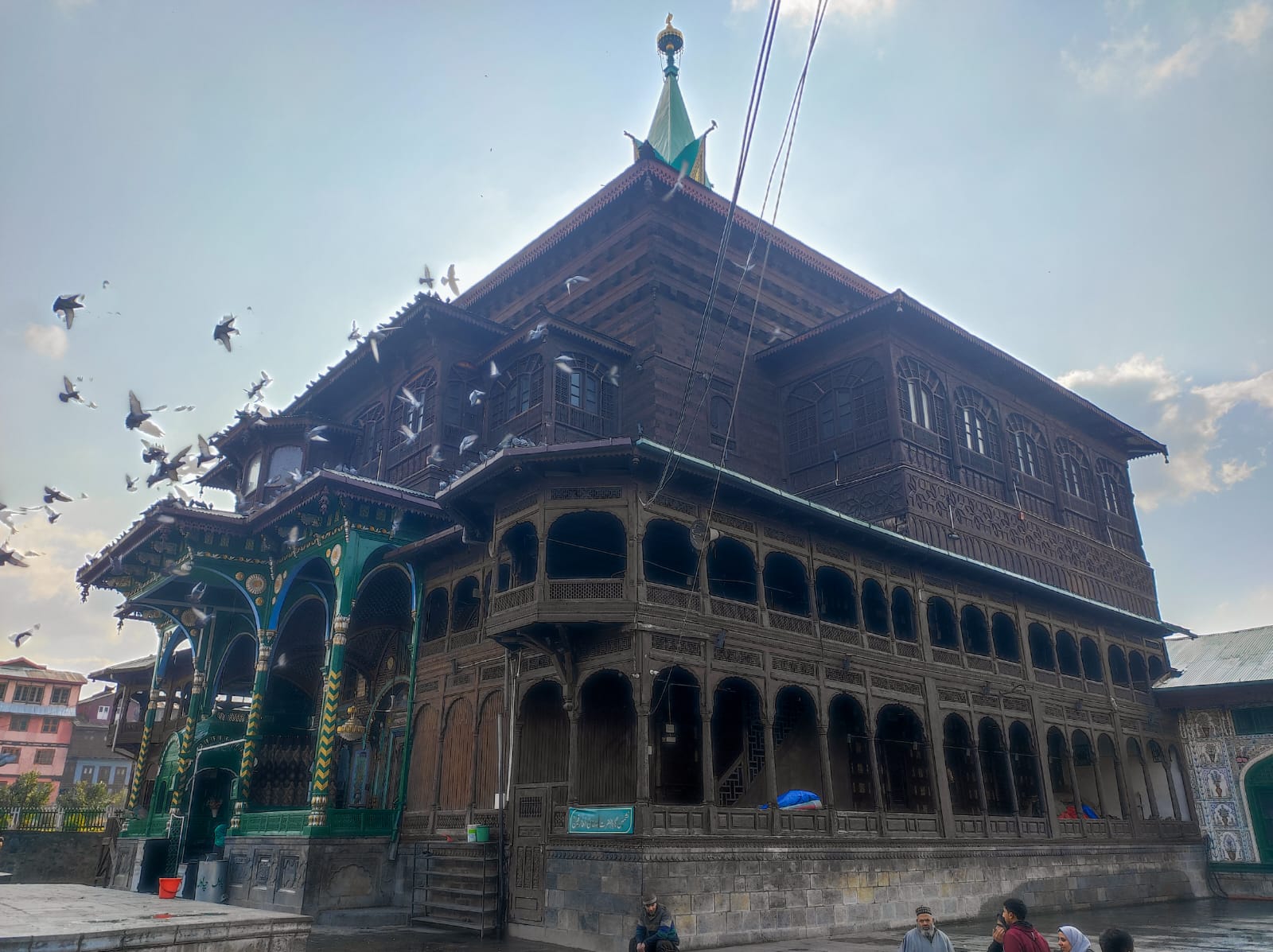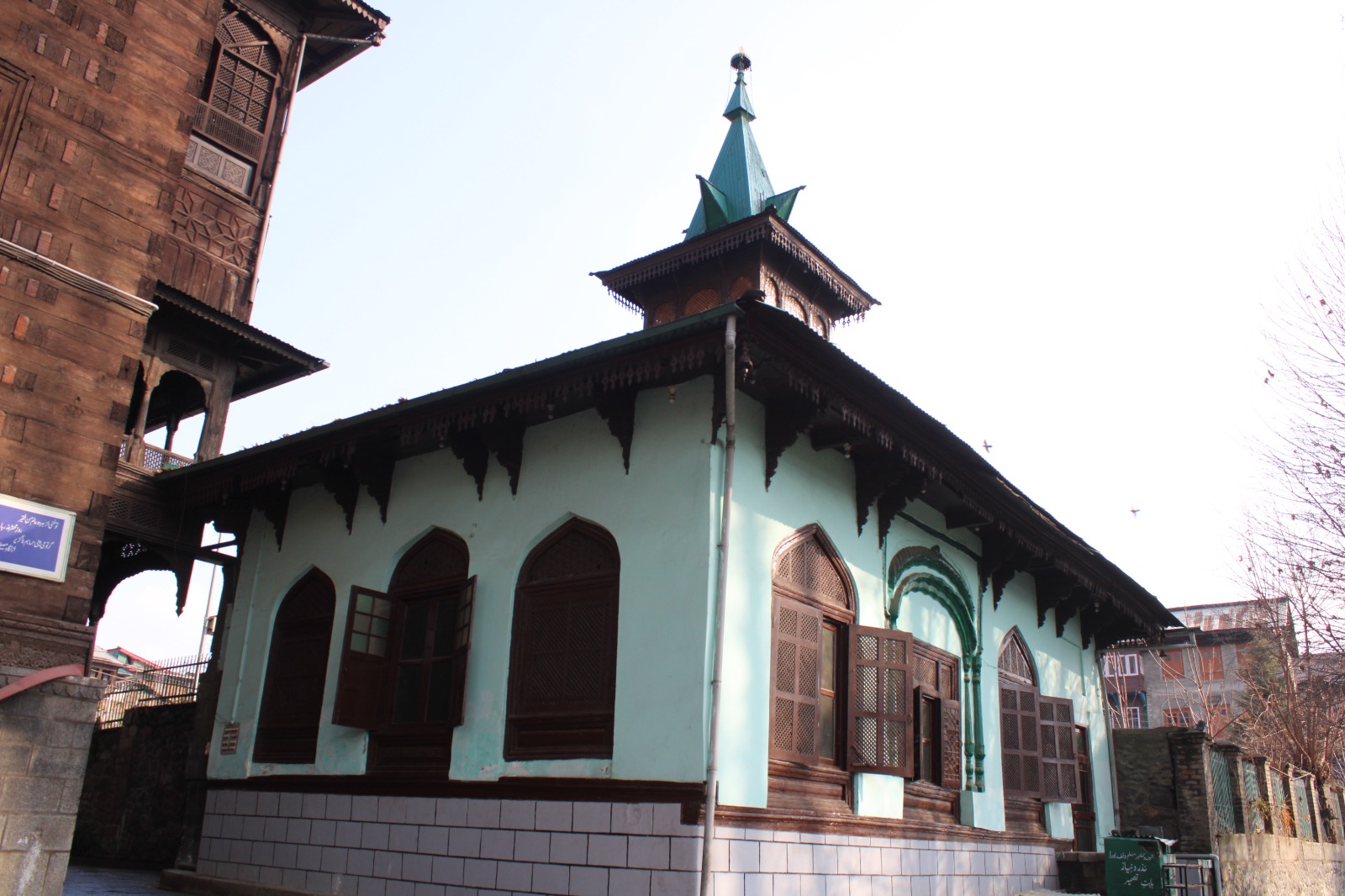According to religious records, Mir Syed Ali Hamadani (RA), a revered Muslim saint who played a pivotal role in introducing Islam to the Kashmir Valley, passed away on the 6th of Zil’Hijjah in the year 786 Hijri, corresponding to 1384 AC in the English Calendar. His demise occurred in Pakhli, which was then the final frontier of the Kashmir Valley under the rule of the Shah Mir Dynasty.
 Photograph By Zubair Hameed
Photograph By Zubair Hameed
Upon the spread of his demise, people from both the Kashmir Valley and Hamadan, the Iranian city that served as the birthplace of Syed Ali Hamadani, flocked to Pakhli to pay their respects. However, a dispute arose shortly thereafter among the residents of Srinagar, Pakhli, and Hamadan regarding the final resting place of Mir Syed Ali Hamadani (RA).
Each of the three communities expressed a desire to honor the saint by burying him in their respective regional territories. The Kashmiri people advocated for burying the saint in Srinagar's Fateh Kadal area, where Khanqah-E-Moula, a mosque constructed by Mir Syed Ali Hamadani, is situated.
While the Pakhli community demanded the burial of the Saint in their area, citing the fact that he died there, the people of Hamadan insisted that the Saint should be laid to rest in Hamadan, his birthplace and upbringing. They proclaimed that the saint had spent most of his time among the people of Hamadan, justifying his deserving burial in that location.
The situation intensified when Sultan Muhammad Khan, a local leader from Pakhli, also insisted on having the saint's body for the final rituals.
 Photograph By Zubair Hameed
Photograph By Zubair Hameed
As the debate continued, with each group advocating for their territory as the most suitable burial site for the Saint, Sheikh Qawam-U-Din Badakshi (RA), the top disciple of Mir Syed Ali Hamadani (RA), emerged from the crowd. He proposed a resolution, stating that after performing Ghusl (the Islamic practice of washing the deceased) and Kafan (shrouding the dead body in white cloth), the community capable of lifting the coffin of the saint would earn the right to bury him.
Sheikh Badakshi (RA) prophesied that the coffin would only be lifted by those who possessed the utmost devotion for Mir Syed Ali Hamadani (RA), and that the direction it would take would be determined on its own.
Upon hearing this announcement, each group promptly organized its members to lift the coffin of the saint.
Initially, a group of individuals from the Kashmir Valley stepped forward and attempted to lift the coffin, but they were unsuccessful.

Next, locals from Pakhli, filled with optimism, endeavoured to lift the coffin. Despite their earnest attempts to redouble their efforts, the coffin remained steadfast in its position, refusing to be moved.
Finally, people from Hamadan selected Sheikh Qiamuddin Bakshi (RA) for the task. In a miraculous turn of events, Sheikh Bakshi (RA) stepped forward and singularly lifted the coffin of his master, Syed Ali Hamadani (RA). Moreover, during the event, observers witnessed that the coffin, within the grasp of Sheikh Bakshi (RA), moved and indicated its direction toward Central Asia.

According to historical accounts, it took nearly 6 months for the Saint's remains to reach Khat’lan, Tajikistan, in Central Asia, where he was eventually buried. It is also documented in history that when the coffin of Mir Syed Ali Hamadani (RA) was opened, a startling fragrance filled the entire area, astonishing the local inhabitants.

Mir Syed Ali Hamadani (RA) was a prominent Muslim Saint of Sha’fayi Jurisprudence who played a crucial role in introducing Islam to the Kashmir Valley in the 1370s AC. Apart from being a distinguished religious scholar, he is also regarded as an icon who catalyzed the industrial revolution in the valley. His Urs (annual commemoration) is celebrated in numerous South and Central Asian countries on the 6th of Zil-Hijjah, the 12th month of the Islamic Calendar.
This narrative is documented in the book "Tazkirah Auliya-E-Kashmir," authored by Pir Hassan Shah Khwami in Urdu.